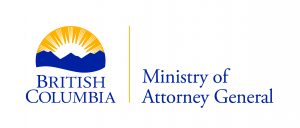Completed
Artificial Intelligence and Civil Liability Project
Downloads:
Report on Artificial Intelligence and Civil LiabilityOverview
The goal of the Artificial Intelligence and Civil Liability Project was to determine how the rules of tort law need to adapt to respond to harm to persons and property caused by autonomous artificial intelligence (AI) systems. The project set out to answer: Who is, or should be, liable for choices made by intelligent machines operating autonomously? What happens when a robot commits a tort?
AI systems are extensively used in all facets of society, including speech recognition, translation, machine vision, image recognition and analysis. They are used in medical diagnostics, law enforcement, financial systems, robotics, and the administration of justice, to name a few. These systems operate with varying degrees of autonomy, relying on machine learning to assess and react to new situations, bringing with them great benefits in efficiency and convenience.
While the capabilities of AI do exceed those of humans in certain areas, they have been described as “unpredictable by design”: when an AI system makes a mistake, it generally does so in ways that differ from human error. This raises difficult legal and policy issues surrounding the liability for damage caused by AI errors, and how far liability should extend without stifling technological innovation.
Conducted with the aid of an interdisciplinary expert committee, this project generated recommendations for legislative reform in existing tort law to address difficult issues in applying tort principles of fault, causation, and foreseeability when AI systems make decisions that unintentionally cause harm to persons and property.
Funder

The Artificial Intelligence and Civil Liability Project was made possible by funding from the Ministry of Attorney General for British Columbia.
Related Files
Below you will find additional, relevant and specific documentation, backgrounders, research, resources, media releases and summaries that have been, or will be incorporated into our final publications and study papers.
If you have questions about these or other specific documents, please reach out to BCLI using our contact page or at the bottom of each page of our website.










































